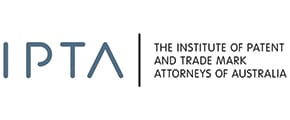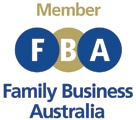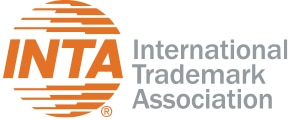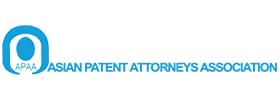Australian & International Design Protection Services
Design Preparation Lodgement Examination Opposition Monitoring Licensing Enforcement
Simplify Your Success – Let Wynnes take the complexity out of IP protection
Our Patent & Trade Mark Attorneys are available for a free consultation. We are happy to discuss your situation with you in person, over the phone, or online.

The Commercial Benefits Of Design Protection
What Is A Design?
The design of an article may contribute to the commercial success of the product. The design features of shape, pattern, configuration and ornamentation applied to the article to form the commercial product can be protected by design registration.
Design registration is one form of intellectual property which can be used to protect industrial designs.
A design registration protects the overall appearance of a product. In Australia design registration can protect the design features of aesthetic articles and functional articles. However a method of manufacture, the use of a particular material or a method of achieving an end cannot be protected by design registration.
Requirements for Obtaining a Design Registration
To be registrable, a design must be new and distinctive. “New” means the design has not been publicly used in Australia or published in a document within or outside of Australia before the priority date of the design application. Please note that a design would not be considered new if it had been published on the internet before the priority date. A design is distinctive unless it is substantially similar in overall impression to a design that has been publicly used in Australia or published in a document within or outside of Australia before the priority date of the design application.
Please note that a person can destroy the newness of their own design by inadvertently or purposely disclosing their design before a design application has been filed with the Australian Designs Office. A design application should therefore be filed before there is any publication or the product is released into the market place.
In Australia we can make use of a 6 month grace period. However this grace period is not applicable in most countries and any disclosure could jeopardize international rights.
Articles Excluded from Design Protection
The Designs Act excludes certain articles from design protection. These articles include those which have a primarily artistic or literary character such as book jackets, calendars, maps, post cards, and greeting cards.
Filing a Design Application for Registration
A design application includes a formal request and a set of representations or drawings showing the design to be protected. Representations are usually line drawings on A4 paper.
The formal request includes a definition of the articles which are covered by the design. It also contains a statement of monopoly, which is analogous to a patent claim, stating the design features for which a monopoly is claimed.

Under the Design Act 2003, a design application must request either registration or publication at the time of filing or within six (6) months of the priority date. Failure to meet this requirement will result in lapsing of the application. With registration, the design’s office performs a formalities check and if the requirements are met is registered and advertised in the Official Journal of Designs. In order to obtain enforceable rights the owner must request examination and gain acceptance and subsequent certification of the registered design. On the other hand, the option of publication does not lead the owner to obtain any enforceable rights but prevents others from obtaining rights to the design.
The registered design has an initial term of five (5) years from the filing date and can be renewed for a further five (5) years for a total of ten years.
Third Party Notification of Relevant Material
The Designs Act 2003, provides a mechanism by which a person may provide the Registrar with relevant information that they believe will affect the validity of the registered design.
Understand What You Can Protect With A Design
Products that have a unique appearance but may not provide a new function. (Eg: The particular shape of a chair) can be protected by design registration.
Plastic or metal extrusions can be protected. (Eg: Housing guttering, shaped conduit, window and door framing).
Key components that have a specific shape to fit within a device or apparatus to enable the operation or utility of a device or apparatus can be subject matter for a design. (Eg: The shape of a mating socket for an electrical connection).
Products that have unique pattern or ornamentation can be protected by designs. By way of example, wallpaper patterns, wrapping paper, cartoon characters on bed sheets can be protected with a registered design.
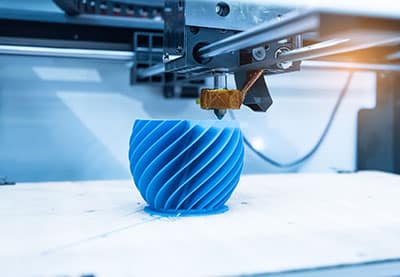
The Difference Between Copyright & Designs
The Copyright Act confers copyright protection in Australia on all original artistic works and works of artistic craftsmanship. This is so whether or not the work is made inside or outside of Australia. Artistic works cover two dimensional aesthetic paintings and sketches as well as engineering drawings for articles of manufacture.
If a copyright owner decides to industrially apply a design on an article based on the owner’s original artistic work, then an application may be made to register the design, providing it is deemed to be a new design, otherwise they must file a design application before the artistic work is published. Design registration is necessary as copyright protection is lost with industrial application of the corresponding design.
However two dimensional designs with features of pattern or ornamentation applied to a surface of an article are excluded from the definition of a corresponding design and therefore enjoy copyright protection irrespective of whether there is industrial application or not.
Don’t Worry – IP Protection Is Complicated
Speak To Us First – It’s Free!
Our team of experienced attorneys can provide you with the best chance of successfully registering your design, while providing the correct protection you need to nullify infringement or copycat competitor concerns.
Find out more about Design Registration
Misconceptions – Copyright & Design Registration
There are several common misconceptions about the relationship between copyright and design registration, often leading to confusion about the protection each offers.
Copyright and Design Registration Protect the Same Things
Reality: Copyright protects original works of authorship, such as literature, music, and art, including the artistic aspects of a design. In contrast, design registration protects the visual design of a product, focusing on its appearance, shape, pattern, and ornamentation. They cover different aspects of creative work.
Design Registration is Not Necessary if You Have Copyright
Reality: While copyright automatically protects artistic works, it may not offer comprehensive protection for the functional design of a product. Design registration is specifically intended to protect new and distinctive designs of commercial products, providing a different scope of protection.
Copyright Protection is Automatic for All Designs
Reality: Copyright protection is automatic for original works of artistic creation, but it does not extend to all aspects of a design, particularly those that are functional rather than artistic. Some designs may not qualify for copyright protection at all, especially if they lack original artistic expression.
Design Registration Protects the Function of a Product
Reality: Design registration protects the appearance of a product, not its function. The functional aspects of a product are typically protected by patents, not design registrations.
Once Registered, a Design is Protected Worldwide
Reality: Design registration is generally territorial. This means it only provides protection in the country or region where it is registered. For international protection, separate applications are required in each jurisdiction.
Design Registration is Automatically Granted Like Copyright
Reality: Unlike copyright, which is automatic, design registration requires a formal application process, examination, and approval by the relevant intellectual property office.
Copyright Expires Once a Design is Registered
Reality: Copyright and design registration can coexist. The expiry of one does not affect the other. Each has its own duration and set of protections.
Register A Design
There are many benefits of trade mark protection including:
- Setting your business apart from your competitors
- Licensing your competitive advantage as another revenue stream
- Forms part of your marketing and branding messages
- Formally recognising it on your balance sheet as an asset
- Preventing new entrants or competitors taking away/over your hard work
Our Design search and registration service will put you on the right path!
At Wynnes, our team of experienced attorneys can provide a free initial design search help you to navigate the process of registering and managing your design.
How Much Does It Cost To Register a Design?
The costs of registering a design in Australia vary depending on several factors, including the number of designs and whether professional services are used. Here’s a general breakdown of the costs involved:
- Application Fee: The cost for filing a design application is approximately AUD 250 for each design. This fee covers the cost of filing and registration but not the cost of examination.
- Examination Fee: Examination of the design is not mandatory at the time of application but is required to enforce the design. The examination fee is around AUD 420.
- Renewal Fees: A design registration in Australia is initially valid for 5 years from the filing date and can be renewed for a further 5 years. The renewal fee is about AUD 320.
- Professional Fees: If you hire a professional, such as a design attorney or a specialist IP firm, to assist with the application, their fees will be additional. These fees can vary widely based on the complexity of your design and the level of assistance required.
- Additional Costs: Additional costs may arise for multiple designs, complex cases, or if amendments are needed to your application.
- International Registration: If you seek to protect your design internationally, there will be additional costs for each jurisdiction you apply in, including filing fees and possibly local agent or attorney fees.
These are general estimates and actual costs may vary. For the most current fee schedule and detailed information, it’s advisable to consult a registered attorney. Remember, investing in design registration can be crucial for protecting your intellectual property and should be factored into your overall business strategy.
DIY Design Applications: Common Mistakes and Risks
- Incorrect Filing: One of the most common mistakes is incorrect or incomplete filing. This can include errors in filling out forms, not providing enough details, or failing to include necessary drawings or representations of the design.
- Inadequate Representation of the Design: Failing to adequately represent the design in the application can lead to problems. It’s crucial that the drawings or photographs clearly show the design as it is to be used.
- Misunderstanding the Scope of Protection: DIY applicants often misunderstand what is protected by a design registration. It’s important to know that design registration protects the visual appearance of a product, not its function, technical features, or material composition.
- Not Conducting a Thorough Search: Failing to conduct a comprehensive search for existing designs can lead to inadvertent infringement of others’ rights or the filing of a design that is not new or distinctive.
- Delay in Filing: Delaying the filing after public disclosure can be detrimental. Public disclosure of a design before filing can often preclude registration because the design may no longer be considered new or original.
- Overlooking Formal Requirements: Each jurisdiction has specific formal requirements for design applications, and overlooking these can lead to rejection or invalidation.
- Failing to Understand International Differences: Design protection is territorial, and the rules can vary significantly from one jurisdiction to another. DIY applicants often make mistakes when trying to secure international protection.
- Not Realizing the Importance of Examination: In Australia, examination of a registered design is necessary before enforcement. DIY applicants might not understand this or might delay examination until it’s too late.
- Renewal Deadlines: Missing renewal deadlines can result in the design registration lapsing. DIY applicants might not be aware of these deadlines or the process for renewal.
- Handling Oppositions and Objections: Dealing with any oppositions or objections during the registration process can be complex and often requires legal expertise.
Given these complexities, while DIY design applications might seem economical initially, they can lead to costly mistakes. It’s often advisable to seek professional advice or at least have a professional review the application before submission.
Design Infringement, Opposition & Removal
When dealing with design rights in Australia, it’s important to understand the concepts of design infringement, opposition, and removal. Here is a summary of each:
Design Infringement
- Definition: Design infringement occurs when a product embodying a design is made, imported, sold, or used without permission, and the design is substantially similar in overall impression to a registered design.
- Assessment of Infringement: Infringement is typically assessed by comparing the allegedly infringing product with the registered design, focusing on whether the two designs create a similar overall impression on an informed user.
- Consequences: If infringement is established, legal actions may include seeking damages, an injunction to stop further infringement, or an account of profits.
- Defences: Possible defences against infringement claims include arguing that the registered design is invalid or that the accused product does not infringe because it does not create the same overall impression.
Design Opposition
- Process: There is no formal opposition procedure in the Australian design system as there is with patents and trade marks. However, third parties can challenge the validity of a registered design after it has been certified (examined and registered).
- Grounds for Challenge: The grounds for challenging a design’s validity include lack of novelty or distinctiveness, the design being not registrable, or not being a design under the legislation.
- Outcome: If the challenge is successful, the design registration can be revoked.
Design Removal (Revocation)
- Grounds for Removal: A registered design can be removed from the register (revoked) if it’s found that it does not meet the requirements for registration, such as being new and distinctive at the time of filing.
- Process: Revocation can happen through legal proceedings, often initiated by a third party.
- Consequences: Removal of the design from the register means the design is no longer protected, and the former rights holder cannot enforce it against others.
Key Points to Consider
- Legal Advice: Navigating design law complexities often requires legal advice, especially in infringement or revocation cases.
- Monitoring and Enforcement: Proactive monitoring of the market is essential for identifying potential infringements and taking timely action.
- Maintaining Validity: Keeping design registrations valid involves paying renewal fees and ensuring the design is used as registered.
Understanding these aspects gives a foundational understanding of design rights, but specific cases may involve unique legal nuances that require professional assessment.
Have Your Received A “Cease and Desist” Notice?
Receiving a cease and desist letter is a serious matter, and the way you handle it can have significant implications for your business and legal rights. Engaging an attorney ensures that you are making informed decisions and taking the appropriate steps to protect your interests.
It is strongly advisable to seek advice from an attorney, preferably one specialising in intellectual property law, if you receive a cease and desist letter for your design. Here are key reasons why seeking legal advice is important:
- Understanding the Claim: An attorney can help you understand the specific allegations made in the cease and desist letter. This includes assessing whether your design infringes upon someone else’s registered design rights and understanding the potential legal implications.
- Expert Legal Guidance: Design law can be complex and nuanced. An attorney with expertise in this field will be able to navigate these complexities, advise you on your legal position, and outline possible courses of action.
- Formulating a Response: Responding appropriately to a cease and desist letter is crucial. Your attorney can draft a response that protects your interests, possibly challenging the validity of the claim or seeking a settlement.
- Negotiation and Settlement: If there’s a possibility of resolving the matter without litigation, an attorney can negotiate on your behalf to reach an agreement that minimises negative impact on your business.
- Litigation Preparation: Should the matter escalate to legal proceedings, having an attorney ensures you are adequately prepared and represented in court.
- Future Protection and Compliance: An attorney can provide advice on how to avoid future legal issues and ensure compliance with design laws.
- Peace of Mind: Knowing that a professional is handling the matter can provide peace of mind and allow you to focus on running your business.
WE ARE PROUD MEMBERS OF
